

བོད་དོན་ལས་འགུལ་ | INITIATIVE FOR TIBET

རྡ་རམ་ས་ལར། སྤྱི་ལོ་ ༢༠༢༣ ཟླ་ ༡༡ ཚེས་ ༥ ནས་ ༡༠ བར། 5-10 November 2023, Dharamshala!

Dr. Dawa Lokyitsang has a Ph.D. in Cultural Anthropology. Her dissertation historicizes the development of Tibetans in exile and how they created a sovereign community and cause in exile following China’s invasion of Tibet in 1959. She looks specifically at the development of Tibetan educational institutions in India and how they became pedagogical grounds for the creation of a national community against developing colonialism in Tibet under China. Her scholarship, as a result, thus sits at the intersection of developing Asian imperial-colonialisms, reactive anti-colonial nationalisms, and emerging Indigenous sovereign-futurisms. Her scholarly writings have been featured in Lexington Books with forthcoming work with Oxford University press, Duke University press, and Rutgers University press. She is also the editor of Lhakar Diaries, a popular multimedia space run by and for Tibetans on a variety of topics Tibetans consider important. Lhakar Diaries is also where you will find most of her work.

Dr. Dawa Lokyitsang has a Ph.D. in Cultural Anthropology. Her dissertation historicizes the development of Tibetans in exile and how they created a sovereign community and cause in exile following China’s invasion of Tibet in 1959. She looks specifically at the development of Tibetan educational institutions in India and how they became pedagogical grounds for the creation of a national community against developing colonialism in Tibet under China. Her scholarship, as a result, thus sits at the intersection of developing Asian imperial-colonialisms, reactive anti-colonial nationalisms, and emerging Indigenous sovereign-futurisms. Her scholarly writings have been featured in Lexington Books with forthcoming work with Oxford University press, Duke University press, and Rutgers University press. She is also the editor of Lhakar Diaries, a popular multimedia space run by and for Tibetans on a variety of topics Tibetans consider important. Lhakar Diaries is also where you will find most of her work.

Dawa Tsering was born in Kham, Tibet. He completed his schooling in Tibet and his school education was entirely in Chinese.
In 1993, he was appointed the deputy secretary of the Research and Analysis section of the Department of Security, Central Tibetan Administration (CTA). In 1995, he was appointed the head of the newly formed China Desk section of the Department of Information and International Relations of CTA. As the head of the China Desk, he was mainly responsible for the CTA’s Chinese outreach initiatives as well as bringing out publications in Chinese.
On 27 February 2008, he was appointed as the chairman of the Tibet Religious Foundation of His Holiness the Dalai Lama (also known as the Representative of His Holiness the Dalai Lama and Central Tibetan Administration) in Taiwan. During his successful thirteen years as the Representative, Representative Dawa Tsering was able to invite His Holiness the Dalai Lama to Taiwan and establish a close relationship between Taiwan and Tibet.
He has published many books, such as: 1. An Oblation to the Land of Snows (The book is about the Tibetan military resistance to the Chinese invasion in 1959 and is based on in-depth interviews with over a hundred people.) 2. Chinese translation of the book The Status of Tibet by Dr. Dr. Michael van Walt. And also contributed many research articles on Sino-Tibetan issues to over 10 publications.
Secretary Dawa Tsering formally took charge as the new Director of Tibet Policy Institute, the official think tank of the CTA on 26 July, 2021.
He has dedicated almost 30 years in service of the Central Tibetan Administration.

Dawa Tsering was born in Kham, Tibet. He completed his schooling in Tibet and his school education was entirely in Chinese.
In 1993, he was appointed the deputy secretary of the Research and Analysis section of the Department of Security, Central Tibetan Administration (CTA). In 1995, he was appointed the head of the newly formed China Desk section of the Department of Information and International Relations of CTA. As the head of the China Desk, he was mainly responsible for the CTA’s Chinese outreach initiatives as well as bringing out publications in Chinese.
On 27 February 2008, he was appointed as the chairman of the Tibet Religious Foundation of His Holiness the Dalai Lama (also known as the Representative of His Holiness the Dalai Lama and Central Tibetan Administration) in Taiwan. During his successful thirteen years as the Representative, Representative Dawa Tsering was able to invite His Holiness the Dalai Lama to Taiwan and establish a close relationship between Taiwan and Tibet.
He has published many books, such as: 1. An Oblation to the Land of Snows (The book is about the Tibetan military resistance to the Chinese invasion in 1959 and is based on in-depth interviews with over a hundred people.) 2. Chinese translation of the book The Status of Tibet by Dr. Dr. Michael van Walt. And also contributed many research articles on Sino-Tibetan issues to over 10 publications.
Secretary Dawa Tsering formally took charge as the new Director of Tibet Policy Institute, the official think tank of the CTA on 26 July, 2021.
He has dedicated almost 30 years in service of the Central Tibetan Administration.

President of Tibetan Youth Congress.
Gonpo Dhondup served as a General Secretary of Foreign Student Association(FOSTAS), KMC, Delhi University in and President of T.Y.H. Student Council, Rohini in 2016. President of Foreign Student Association, Kirori Mal College (Delhi University) and Founding Member of Lhaksam Welfare Group in 2017.

President of Tibetan Youth Congress.
Gonpo Dhondup served as a General Secretary of Foreign Student Association(FOSTAS), KMC, Delhi University in and President of T.Y.H. Student Council, Rohini in 2016. President of Foreign Student Association, Kirori Mal College (Delhi University) and Founding Member of Lhaksam Welfare Group in 2017.
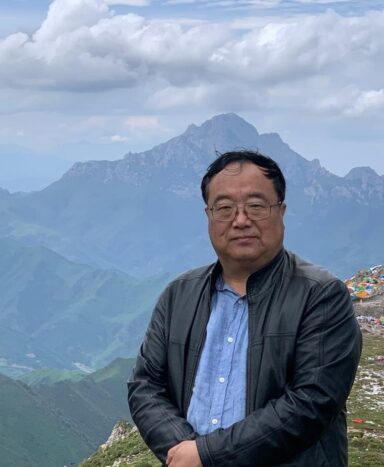
སྤྱི་ཚོགས་རིག་པའི་འབུམ་རམས་པ་ལྡོང་ཕྱིང་གུར་བ་རྒྱལ་ལོ་ནི། ༢༠༡༧་ནས་༢༠༢༠་བར་ཡུན་ནན་དགེ་ཐོན་སློབ་གྲྭ་ཆེན་མོའི་སློབ་དཔོན་ཆེན་མོ་ཟུར་བ་དང་། བོད་ཀྱི་སྤྱི་ཚོགས་སྒྲིག་གཞིའི་འབྱུང་རྒྱུན་ལས། སློབ་གསོ་དང་། སྤྱི་ཚོགས། གཉུག་སེམས་དད་པ་བཅས་ཀྱི་འབྲེལ་བར་དཔྱད་པ་ཞེས་པའི་བསྟན་བཅོས་ཀྱི་རྩོམ་པ་པོའང་ཡིན།
Born in Amdo, Tibet, Dr. Gyal Lo attended school in his home region and then did a Master’s Degree in Tibetan Language and Culture Department at Northwestern University for Nationalities in Lanzhou, China. In 1995, he was appointed Assistant Professor in the same department, where he taught for the next decade and undertook extensive research into Tibetan education. After leaving to obtain a PhD in Educational Sociology at the University of Toronto, he returned to China but was refused employment at his former department due to political sensitivities over his time studying in the West. He was then appointed a full professor at the Yunnan Normal University Institute for Studies in Education from 2017-2020. In 2020, as the political climate changed, Dr. Gyal Lo’s 5-year contract at Yunnan Normal University was terminated on the grounds that he was a foreign Tibetan with a western background and thus a potential political liability in an increasingly authoritarian China.
Dr. Gyal Lo left China on December 31, 2020 and has decided not to return because it has become too risky to make a meaningful contribution to the field of Tibetan education, and in order to alert the international community to the dire threats posed to the collective well being of the Tibetan people and society and the survival of Tibet’s language, religion, and culture. Dr. Gyal Lo is the author of Social Structuration in Tibetan Society: Education, Society, and Spirituality (Lexington Books, 2016).
(From Tibet Action Institute Website)

སྤྱི་ཚོགས་རིག་པའི་འབུམ་རམས་པ་ལྡོང་ཕྱིང་གུར་བ་རྒྱལ་ལོ་ནི། ༢༠༡༧་ནས་༢༠༢༠་བར་ཡུན་ནན་དགེ་ཐོན་སློབ་གྲྭ་ཆེན་མོའི་སློབ་དཔོན་ཆེན་མོ་ཟུར་བ་དང་། བོད་ཀྱི་སྤྱི་ཚོགས་སྒྲིག་གཞིའི་འབྱུང་རྒྱུན་ལས། སློབ་གསོ་དང་། སྤྱི་ཚོགས། གཉུག་སེམས་དད་པ་བཅས་ཀྱི་འབྲེལ་བར་དཔྱད་པ་ཞེས་པའི་བསྟན་བཅོས་ཀྱི་རྩོམ་པ་པོའང་ཡིན།
Born in Amdo, Tibet, Dr. Gyal Lo attended school in his home region and then did a Master’s Degree in Tibetan Language and Culture Department at Northwestern University for Nationalities in Lanzhou, China. In 1995, he was appointed Assistant Professor in the same department, where he taught for the next decade and undertook extensive research into Tibetan education. After leaving to obtain a PhD in Educational Sociology at the University of Toronto, he returned to China but was refused employment at his former department due to political sensitivities over his time studying in the West. He was then appointed a full professor at the Yunnan Normal University Institute for Studies in Education from 2017-2020. In 2020, as the political climate changed, Dr. Gyal Lo’s 5-year contract at Yunnan Normal University was terminated on the grounds that he was a foreign Tibetan with a western background and thus a potential political liability in an increasingly authoritarian China.
Dr. Gyal Lo left China on December 31, 2020 and has decided not to return because it has become too risky to make a meaningful contribution to the field of Tibetan education, and in order to alert the international community to the dire threats posed to the collective well being of the Tibetan people and society and the survival of Tibet’s language, religion, and culture. Dr. Gyal Lo is the author of Social Structuration in Tibetan Society: Education, Society, and Spirituality (Lexington Books, 2016).
(From Tibet Action Institute Website)
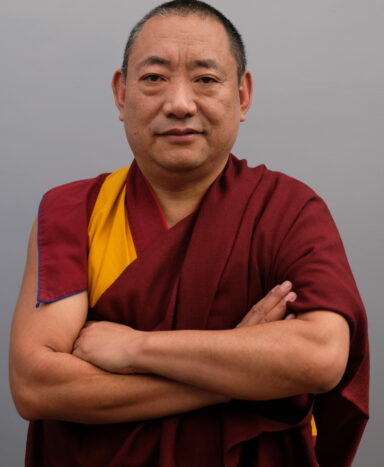
Geshe Lobsang Monlam is a monk and scholar who has devoted his life to incorporating Tibetan knowledge systems into the digital world. Born in 1976, he began his education at a local monastery before enrolling at the Sera Mey Thoesam Norling Monastic Institute. After 16 years of studying and rigorous practise, he successfully passed his Geshe examination in 2013. Geshe Lobsang Monlam's interests expanded beyond Buddhist studies to Western oil paintings and Tibetan Thangka painting, and he taught himself how to paint. He also developed a passion for gadgets and computers, and in 2005, he created the first Monlam Tibetan font. Since then, he has developed 37 software programmes and made them available on the Android, iOS, and Windows, and Mac OS. His work has had a tremendous impact, with the Monlam Dictionary App being downloaded by millions of people worldwide (iOS data).
Geshe Lobsang Monlam's commitment to integrating Tibetan knowledge into the digital world has been recognised by many prominent religious leaders, primarily His Holiness the 14th Dalai Lama. He has also visited universities and research institutes around the world, sharing his viewpoints and learning from experts in computer science. His passion for meditation has also led him to become a daily practitioner. Geshe Lobsang Monlam's latest venture is Monlam AI.
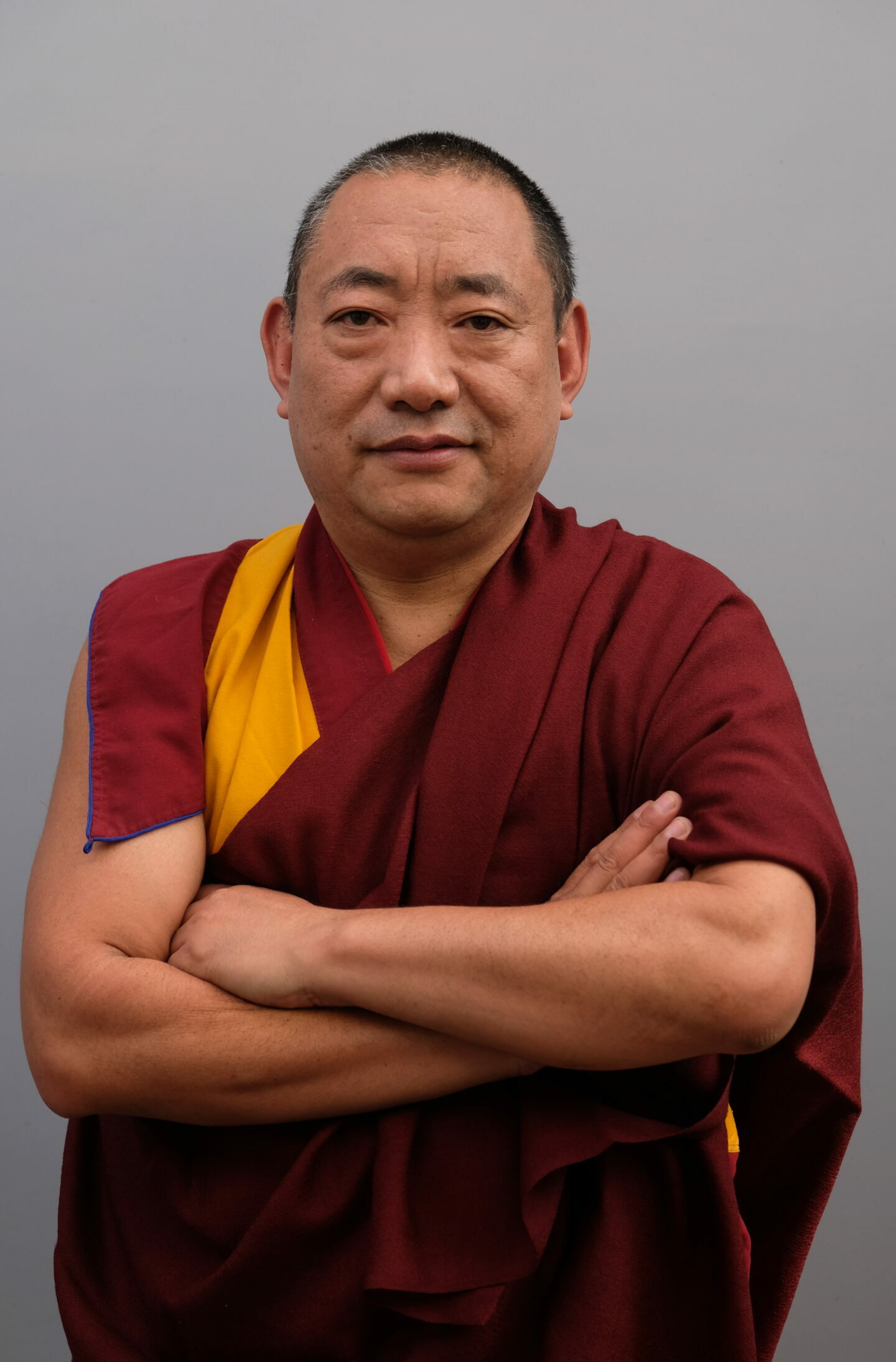
Geshe Lobsang Monlam is a monk and scholar who has devoted his life to incorporating Tibetan knowledge systems into the digital world. Born in 1976, he began his education at a local monastery before enrolling at the Sera Mey Thoesam Norling Monastic Institute. After 16 years of studying and rigorous practise, he successfully passed his Geshe examination in 2013. Geshe Lobsang Monlam's interests expanded beyond Buddhist studies to Western oil paintings and Tibetan Thangka painting, and he taught himself how to paint. He also developed a passion for gadgets and computers, and in 2005, he created the first Monlam Tibetan font. Since then, he has developed 37 software programmes and made them available on the Android, iOS, and Windows, and Mac OS. His work has had a tremendous impact, with the Monlam Dictionary App being downloaded by millions of people worldwide (iOS data).
Geshe Lobsang Monlam's commitment to integrating Tibetan knowledge into the digital world has been recognised by many prominent religious leaders, primarily His Holiness the 14th Dalai Lama. He has also visited universities and research institutes around the world, sharing his viewpoints and learning from experts in computer science. His passion for meditation has also led him to become a daily practitioner. Geshe Lobsang Monlam's latest venture is Monlam AI.

Artist Karma Sichoe, born in 1973 in Dharamshala India, is married and has two young daughters. The family is currently based in the Himalayan foothills Karma was raised and schooled as an orphan-refugee by Tibetan Children's Village school, Dharamshala. He received a formal Thangka painting training at the Centre For Tibetan Arts and Craft, Dharamshala from renowned master Thangka painter Rinzin Paljor and his son, Tashi Dorjee, and graduated in 1994.
Between 1994 and 2008 he engaged in many political activitism for the freedom struggle of his country, Tibet, while studying independently in classical and contemporary art forms. In 2016, he received a fellowship from Rubin Foundation for a two month Artist's Residency in Vermont Studio Center, USA
Over thirty years of his journey as a painter has been to find his own voice and search for ultimate truths. His interest is in the foundation of our mental attitude and states of mind that shape our personalities and sense of physical reality: how we as a species shape our future generations and the future of this planet. As an artist, he tries to express feelings, the state of consciousness and the subject matter of the day-to-day human story, the story of human struggles, hopes and dreams. Karma uses color form and Tibetan motifs to create surreal abstract images. He has developed a uniquely personal visual language.

Artist Karma Sichoe, born in 1973 in Dharamshala India, is married and has two young daughters. The family is currently based in the Himalayan foothills Karma was raised and schooled as an orphan-refugee by Tibetan Children's Village school, Dharamshala. He received a formal Thangka painting training at the Centre For Tibetan Arts and Craft, Dharamshala from renowned master Thangka painter Rinzin Paljor and his son, Tashi Dorjee, and graduated in 1994.
Between 1994 and 2008 he engaged in many political activitism for the freedom struggle of his country, Tibet, while studying independently in classical and contemporary art forms. In 2016, he received a fellowship from Rubin Foundation for a two month Artist's Residency in Vermont Studio Center, USA
Over thirty years of his journey as a painter has been to find his own voice and search for ultimate truths. His interest is in the foundation of our mental attitude and states of mind that shape our personalities and sense of physical reality: how we as a species shape our future generations and the future of this planet. As an artist, he tries to express feelings, the state of consciousness and the subject matter of the day-to-day human story, the story of human struggles, hopes and dreams. Karma uses color form and Tibetan motifs to create surreal abstract images. He has developed a uniquely personal visual language.
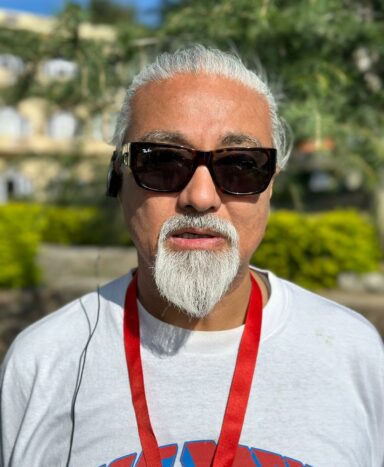
Born in 1963 in Dharamsala, India, Lamdark grew up in Switzerland where he later apprenticed and worked as an interior architect. He went on to study at Parsons New School for Design in New York, and he achieved an MA in Visual Art at Columbia University. The artist lives and works in Zurich, Switzerland.
Lamdark’s plastic sculptures and mirrored lightboxes are evidence of his displaced and multicultural upbringing. His search for an appropriate cultural space ultimately turned inwards and he came to understand and reconnect with his Tibetan heritage while living in the West. Lamdark’s Tibetan-Western identity lies in his ability to understand and find a balance between both cultures. Combining unusual materials, from hair to plastic, beer cans to nail polish, Lamdark’s life and works bring together the unfamiliar and revel in recycling everyday objects into works of art.
Lamdark has participated in numerous solo and group exhibitions around the world including Anonymous: Contemporary Tibetan Art held at The Fleming Museum at the University of Vermont, Burlington, Vermont, USA; the Queens Museum of Art, New York, USA; and the Dorsky Museum at the State University of New York, New Paltz, New York, USA; Scorching Sun of Tibet, Songzhuang Art Center, Beijing, China;
Tradition Transformed – Tibetan Artists Respond, The Rubin Museum of Art, New York, USA.
In 2008, Lamdark presented in the Third Guangzhou Triennial and installed 10,000-kilogram rock that he smuggled out of Tibet and encased in melted plastic – titled Pink Himalayan Boulder – at ShContemporary in Shanghai. He participated in the annual Dharamsala Interantional Artists’ Workshop in 2012 and completed a residency at the Samuel Dorsky Museum of Art, SUNY New Paltz in 2013.
Lamdark’s works are held in private and public collections in Europe, Australia and the United States, including the World Museum in Liverpool, UK; the Burger Collection, Hong Kong; and the White Rabbit Collection in Sydney, Australia.
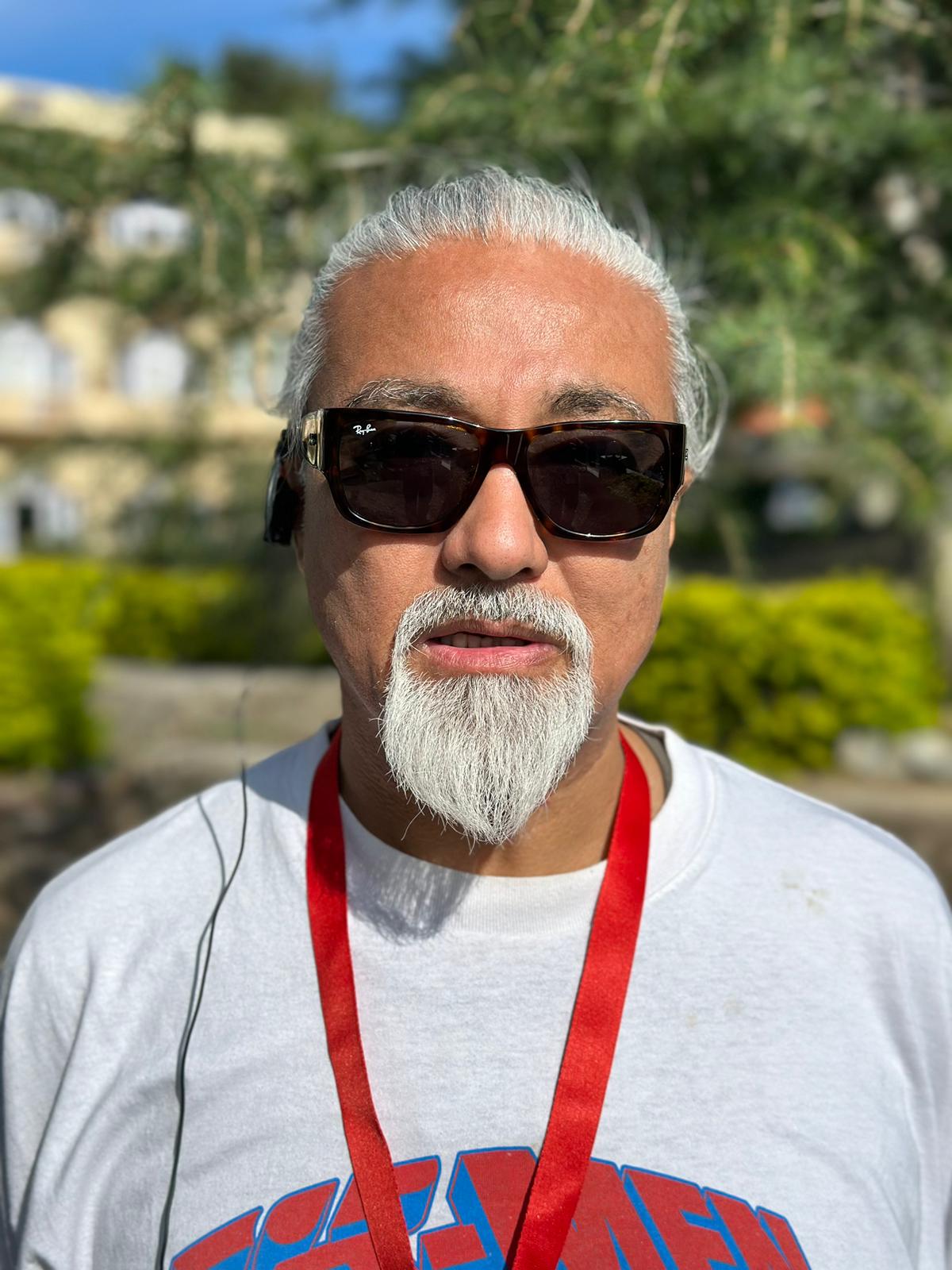
Born in 1963 in Dharamsala, India, Lamdark grew up in Switzerland where he later apprenticed and worked as an interior architect. He went on to study at Parsons New School for Design in New York, and he achieved an MA in Visual Art at Columbia University. The artist lives and works in Zurich, Switzerland.
Lamdark’s plastic sculptures and mirrored lightboxes are evidence of his displaced and multicultural upbringing. His search for an appropriate cultural space ultimately turned inwards and he came to understand and reconnect with his Tibetan heritage while living in the West. Lamdark’s Tibetan-Western identity lies in his ability to understand and find a balance between both cultures. Combining unusual materials, from hair to plastic, beer cans to nail polish, Lamdark’s life and works bring together the unfamiliar and revel in recycling everyday objects into works of art.
Lamdark has participated in numerous solo and group exhibitions around the world including Anonymous: Contemporary Tibetan Art held at The Fleming Museum at the University of Vermont, Burlington, Vermont, USA; the Queens Museum of Art, New York, USA; and the Dorsky Museum at the State University of New York, New Paltz, New York, USA; Scorching Sun of Tibet, Songzhuang Art Center, Beijing, China;
Tradition Transformed – Tibetan Artists Respond, The Rubin Museum of Art, New York, USA.
In 2008, Lamdark presented in the Third Guangzhou Triennial and installed 10,000-kilogram rock that he smuggled out of Tibet and encased in melted plastic – titled Pink Himalayan Boulder – at ShContemporary in Shanghai. He participated in the annual Dharamsala Interantional Artists’ Workshop in 2012 and completed a residency at the Samuel Dorsky Museum of Art, SUNY New Paltz in 2013.
Lamdark’s works are held in private and public collections in Europe, Australia and the United States, including the World Museum in Liverpool, UK; the Burger Collection, Hong Kong; and the White Rabbit Collection in Sydney, Australia.

Lobsang Yeshi is a former Researcher & Translator (Delhi based Tibetan Affairs Research Center, Govt of India), Former Vice President, TYC. Former School Teacher. Former HIV activist. Former Member of Tibetan Parliament. Former Settlement Officer. CTA. Independent Researcher.

Lobsang Yeshi is a former Researcher & Translator (Delhi based Tibetan Affairs Research Center, Govt of India), Former Vice President, TYC. Former School Teacher. Former HIV activist. Former Member of Tibetan Parliament. Former Settlement Officer. CTA. Independent Researcher.

Ngoshi Choedon is a self-taught Tibetan freelance illustrator and paper collage artist. She is currently based in Dharamsala, India.
She finished her MBA in 2016 and later did Foundation courses in Expressive and Creative Arts Therapies (FECAT) from Studio for Movement Arts Therapies (2021-2022) to be an Expressive Arts Therapy practitioner and does small group activities from time to time.
She exhibited her Paper collage art at the Tibet Flim Festival in Dharamsala on the 08th and 09th of October'22.
She had collaborated with HP State Handicrafts and Hand Loom Corporation Limited in 2023 and had the chance to explore the Himachali costume which developed into a special series of artworks, later supplied to the prestigious Rashtrapati Niwas, Mashobra.
Three of the artworks are placed inside the Hon'ble President of India's private room, while two others are placed in the dining room which is open to public viewing.
She likes to reuse the trash to make it into an art piece. She loves creating things with her hands and that's where she derives her greatest joy!
Her art is primarily inspired by Tibetan cultural attire and jewelry. She says she is still learning and exploring different attire in Tibet as it's very diverse.
She believes that her art is a small way of preserving our Tibetan culture in exile.

Ngoshi Choedon is a self-taught Tibetan freelance illustrator and paper collage artist. She is currently based in Dharamsala, India.
She finished her MBA in 2016 and later did Foundation courses in Expressive and Creative Arts Therapies (FECAT) from Studio for Movement Arts Therapies (2021-2022) to be an Expressive Arts Therapy practitioner and does small group activities from time to time.
She exhibited her Paper collage art at the Tibet Flim Festival in Dharamsala on the 08th and 09th of October'22.
She had collaborated with HP State Handicrafts and Hand Loom Corporation Limited in 2023 and had the chance to explore the Himachali costume which developed into a special series of artworks, later supplied to the prestigious Rashtrapati Niwas, Mashobra.
Three of the artworks are placed inside the Hon'ble President of India's private room, while two others are placed in the dining room which is open to public viewing.
She likes to reuse the trash to make it into an art piece. She loves creating things with her hands and that's where she derives her greatest joy!
Her art is primarily inspired by Tibetan cultural attire and jewelry. She says she is still learning and exploring different attire in Tibet as it's very diverse.
She believes that her art is a small way of preserving our Tibetan culture in exile.
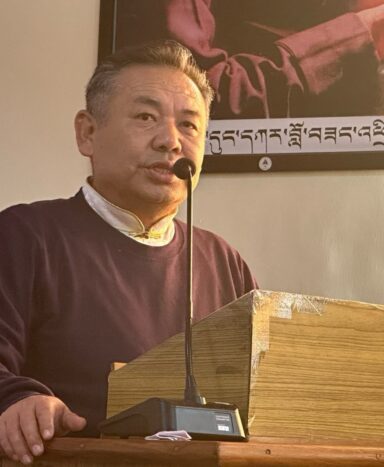
Passang Tsering is currently the principal of College of Higher Tibetan Studies, Sarah.
He was born in Tibet and completed his formal education at Tibetan Children’s Village School, Dharamshala. He completed his further studies at Spicer Memorial College, Pune. He was selected to pursue further studies in the United States through the Tibetan Scholarship Program.
Passang Tsering comes with years of dedicated service and rich experience in administration and leadership. He co-taught Tibetan culture and civilization to visiting Emory University students and taught the same program to the Earlham College students in fall semester Tibetan Study abroad program for many years. Passang Tsering also travelled to Earlham college as visiting resident scholar and taught Tibetan culture and civilization.
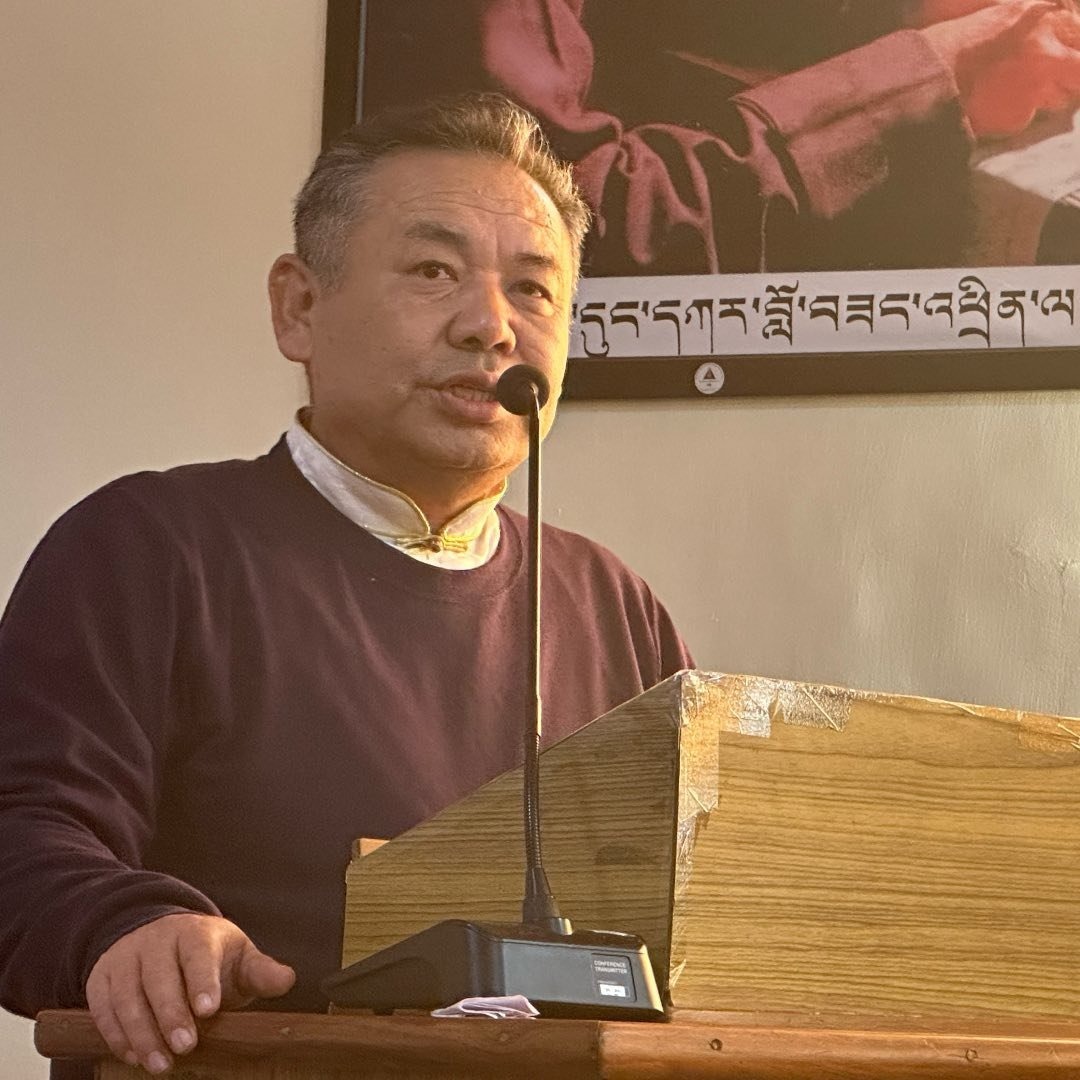
Passang Tsering is currently the principal of College of Higher Tibetan Studies, Sarah.
He was born in Tibet and completed his formal education at Tibetan Children’s Village School, Dharamshala. He completed his further studies at Spicer Memorial College, Pune. He was selected to pursue further studies in the United States through the Tibetan Scholarship Program.
Passang Tsering comes with years of dedicated service and rich experience in administration and leadership. He co-taught Tibetan culture and civilization to visiting Emory University students and taught the same program to the Earlham College students in fall semester Tibetan Study abroad program for many years. Passang Tsering also travelled to Earlham college as visiting resident scholar and taught Tibetan culture and civilization.

Pema Chagzoetsang is a former North American Chithue. Worked in Tibetan Homes Foundation in India 1978-1983. In 1991 she achieved the designation of a Tibetan Resettlement Site for Salt Lake City, and successfully established the Utah Tibetan community. She also raised 13 million dollars to renovate Utah Tibetan community Center. Served in the New York Tibet Fund board 1997-2007. She also received 6 different types of awards including Asian American Community Leadership in 1996.

Pema Chagzoetsang is a former North American Chithue. Worked in Tibetan Homes Foundation in India 1978-1983. In 1991 she achieved the designation of a Tibetan Resettlement Site for Salt Lake City, and successfully established the Utah Tibetan community. She also raised 13 million dollars to renovate Utah Tibetan community Center. Served in the New York Tibet Fund board 1997-2007. She also received 6 different types of awards including Asian American Community Leadership in 1996.

Tashi Nyima is an exile-bom Tibetan artist, graduated from Fine Arts in Delhi, India. He uses various mediums and styles in his artwork, usually influenced by his physical, mental, and emotional landscape.
You can always find fusion of Tibetan culture and traditions with the western influences in his work. Apart from painting he also likes to photograph.

Tashi Nyima is an exile-bom Tibetan artist, graduated from Fine Arts in Delhi, India. He uses various mediums and styles in his artwork, usually influenced by his physical, mental, and emotional landscape.
You can always find fusion of Tibetan culture and traditions with the western influences in his work. Apart from painting he also likes to photograph.

Tenzin Melak (b. India, 1993) is a multi-disciplinary Tibetan artist, born in India, and currently based in Dharamsala, the exile capital of Tibet. After completing his formal education from TCV, he followed his personal quest of becoming a visual artist by obtaining a BFA in Applied Art at the College of Art, University of Delhi.
Being brought up in an environment where Buddhist values and morality were deeply intertwined with the daily upbringing of Tibetan children in exile, and later his own venture into different phases of life, most of Melak's artworks reflect upon the formation of one's identity in Buddhist's life world, the question of self-reflexivity and illusion, the foundation of truth and suffering in Tibetan Buddhist philosophy, the contradiction of theory and practices of Buddhism prevalent in Tibetan society and the world at large. And most importantly his own interpretation of Tibetan Buddhist philosophy and practices. In a way, it presents the inseparability of his artworks and life experiences.
Deviating from the principal medium of Tibetan traditional art making, (which is painting) yet skilfully appropriating them in the creative process, his art-making styles and materials are unconventional, distinctive, and diverse. Using everyday objects found in our surroundings such as mirrors, prayer flags, stickers, candles, glasses, and the national flag, he has given equal attention to the materiality of each object-through which his artworks are formed and it also acts as an extension of different colors in his artworks. The themes, subjects, and materials he has employed in his work have made his arts look familiar yet indefinable, and it also opens up a space for any audience who can project their thoughts and imagination.
Over the many years working as a Tibetan visual artist, Melak did numerous commissioned works, and his recent artwork, "Tibetan Alphabet series" was exhibited by The Yakpo Collective (an online Tibetan Artist Collective).

Tenzin Melak (b. India, 1993) is a multi-disciplinary Tibetan artist, born in India, and currently based in Dharamsala, the exile capital of Tibet. After completing his formal education from TCV, he followed his personal quest of becoming a visual artist by obtaining a BFA in Applied Art at the College of Art, University of Delhi.
Being brought up in an environment where Buddhist values and morality were deeply intertwined with the daily upbringing of Tibetan children in exile, and later his own venture into different phases of life, most of Melak's artworks reflect upon the formation of one's identity in Buddhist's life world, the question of self-reflexivity and illusion, the foundation of truth and suffering in Tibetan Buddhist philosophy, the contradiction of theory and practices of Buddhism prevalent in Tibetan society and the world at large. And most importantly his own interpretation of Tibetan Buddhist philosophy and practices. In a way, it presents the inseparability of his artworks and life experiences.
Deviating from the principal medium of Tibetan traditional art making, (which is painting) yet skilfully appropriating them in the creative process, his art-making styles and materials are unconventional, distinctive, and diverse. Using everyday objects found in our surroundings such as mirrors, prayer flags, stickers, candles, glasses, and the national flag, he has given equal attention to the materiality of each object-through which his artworks are formed and it also acts as an extension of different colors in his artworks. The themes, subjects, and materials he has employed in his work have made his arts look familiar yet indefinable, and it also opens up a space for any audience who can project their thoughts and imagination.
Over the many years working as a Tibetan visual artist, Melak did numerous commissioned works, and his recent artwork, "Tibetan Alphabet series" was exhibited by The Yakpo Collective (an online Tibetan Artist Collective).

བཀྲས་མཐོང་བསྟན་འཛིན་རྣམ་རྒྱལ་ནི་དབུས་བོད་མིའི་སྒྲིག་འཛུགས་ཀྱི་བཀའ་བློན་ཁྲི་པ་དང་བྱང་ཨ་རིའི་སྐུ་ཚབ་དོན་གཅོད་གནང་མྱོང་བ་མ་ཟད། བོད་ཀྱི་གཞོན་ནུ་ལྷན་ཚོགས་དང་ཨ་རིའི་བོད་ཀྱི་ཐེབས་རྩ། རྒྱལ་སྤྱིའི་བོད་དོན་ལས་འགུལ་ཁང་སོགས་གསར་འཛུགས་གནང་མཁན་གྲལ་གྱི་མི་སྣ་གལ་ཆེན་ཞིག་ཀྱང་ཆགས་ཡོད། དེ་བཞིན་ཁོང་གིས་སན་ཧྥོར་ཌི་སློབ་གྲྭ་ཆེན་མོར་སློབ་ཁྲིད་གནང་མྱོང་བ་དང་། ད་ལྟ་ཨ་རིའི་རླུང་འཕྲིན་ཁང་གི་བོད་སྐད་སྡེ་ཚན་གྱི་འགན་འཛིན་གནང་བཞིན་ཡོད།
Tenzin Namgyal Tethong is a former Kalon Tripa of the Tibetan government in exile, and a former Representative of His Holiness the Dalai Lama in the U.S. He is one of the founding member of the Tibetan Youth Congress and established the Tibet Fund and the International Campaign for Tibet among his many endeavors for Tibet. He also taught at Stanford University and is presently the Chief of the Tibetan Service at Voice of America.
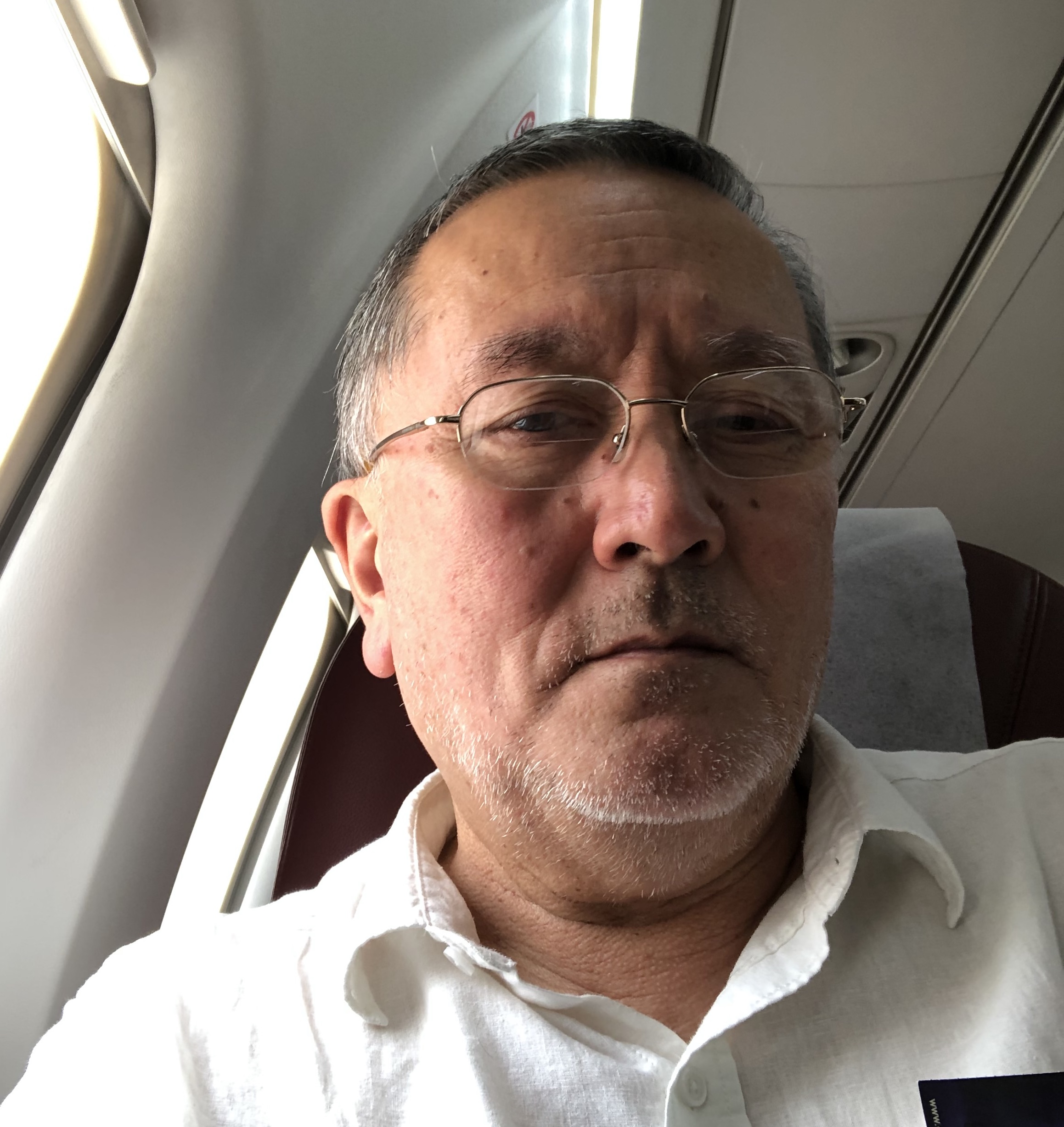
བཀྲས་མཐོང་བསྟན་འཛིན་རྣམ་རྒྱལ་ནི་དབུས་བོད་མིའི་སྒྲིག་འཛུགས་ཀྱི་བཀའ་བློན་ཁྲི་པ་དང་བྱང་ཨ་རིའི་སྐུ་ཚབ་དོན་གཅོད་གནང་མྱོང་བ་མ་ཟད། བོད་ཀྱི་གཞོན་ནུ་ལྷན་ཚོགས་དང་ཨ་རིའི་བོད་ཀྱི་ཐེབས་རྩ། རྒྱལ་སྤྱིའི་བོད་དོན་ལས་འགུལ་ཁང་སོགས་གསར་འཛུགས་གནང་མཁན་གྲལ་གྱི་མི་སྣ་གལ་ཆེན་ཞིག་ཀྱང་ཆགས་ཡོད། དེ་བཞིན་ཁོང་གིས་སན་ཧྥོར་ཌི་སློབ་གྲྭ་ཆེན་མོར་སློབ་ཁྲིད་གནང་མྱོང་བ་དང་། ད་ལྟ་ཨ་རིའི་རླུང་འཕྲིན་ཁང་གི་བོད་སྐད་སྡེ་ཚན་གྱི་འགན་འཛིན་གནང་བཞིན་ཡོད།
Tenzin Namgyal Tethong is a former Kalon Tripa of the Tibetan government in exile, and a former Representative of His Holiness the Dalai Lama in the U.S. He is one of the founding member of the Tibetan Youth Congress and established the Tibet Fund and the International Campaign for Tibet among his many endeavors for Tibet. He also taught at Stanford University and is presently the Chief of the Tibetan Service at Voice of America.

བོད་ནང་ལོ་དྲུག་སློབ་ཆུང་འགྲིམ་རྗེས། ཕྱི་ལོ་ ༢༠༠༠ རྒྱ་ནག་ཧྲན་ཏུང་ཞིང་ཆེན་ཅི་ནན་བོད་ལྗོངས་སློབ་འབྲིང་ནང་ཚུད། དེ་ནས་མུ་མཐུད་ཧྲན་ཞི་ཞིང་ཆེན་ཐད་ཡོན་གཙུག་ལག་སློབ་ཆེན་གྱི་མཐོ་རིམ་སློབ་འབྲིང་ནང་སློབ་སྦྱོང་བྱས། དེ་རྗེས་རྒྱ་ནག་ཧྥུ་ཅན་ཞིང་ཆེན་ཤཱ་མན་གཙུག་ལག་སློབ་ཆེན་ནས་སྤྱི་ཆོགས་རིག་པའི་ཚན་ཁག་ཐོག་གཙུག་ལག་རབ་འབྱམས་པ་སློབ་པ་མཐར་ཕྱིན། ཕྱི་ལོ་ ༢༠༡༡ ནས་ ༢༠༡༢ དབར་གསེར་རྟ་བླ་རུང་སྒར་ལྔ་རིག་ནང་བསྟན་སློབ་གླིང་ནང་ཟུར་སྦྱོང་སློབ་བཞུགས་བྱས། ཕྱི་ལོ་ ༢༠༡༣ རྒྱ་གར་ནང་འབྱོར། དེ་ནས་ནོར་ཝེ་བོད་ཀྱི་རླུང་འཕྲིན་ཁང་གི་རྒྱ་སྐད་སྡེ་ཚན་ནང་ལོ་ལྔའི་རིང་གསར་འགོད་པ་བྱས། ད་ལྟའི་འཆར་བོད་ཀྱི་སྲིད་བྱུས་ཉམས་ཞིབ་ཁང་གི་ཉམས་ཞིབ་པ་དང། ཉམས་ཞིབ་བརྗོད་གཞི་གཙོ་བོ་རྒྱ་ནག་གཞུང་གིས་བོད་ཀྱི་ནང་བསྟན་ཐོག་འཛིན་པའི་སྲིད་བྱུས་དང་བོད་ནང་ཆོས་དད་རང་མོས། བོད་ནང་མི་རིགས་མཚུངས་བསྒྱུར་སྲིད་བྱུས།
ཕྱི་ལོ་ ༢༠༢༠ ཐེ་ཝན་རྒྱལ་ཁང་རྒྱལ་ཡོངས་འགྲེམ་སྟོན་ཁང་གིས་གོ་སྒྲིག་ཞུས་པའི་བོད་ཀྱི་སྤྲུལ་སྐུའི་ཡང་སྲིད་སྐོར་གྱི་རྒྱལ་སྤྱའི་འགྲོ་གླེང་ཚོགས་ཆེན་ཐོག། ༄༅། །ཀུན་གཟིགས་༸པཎ་ཆེན་སྐུ་ཕྲེང་གཉིས་གསེར་བུམ་ལས་ངོས་འཛིན་ཞུ་སྐབས་ཀྱི་གླེང་ཕྱོགས་དང་། ཀུན་གཟིགས་༸པཎ་ཆེན་བཅུ་པ་ངོས་འཛིན་ལས་འཕྲོས་ཏེ་གསེར་བུམ་དཀྲུག་འདོན་བྱེད་པའི་ལམ་ལུགས་སྔར་ནས་མཇུག་སྒྲིལ་ཡོད་པའི་སྐོར་བཤད་པ། ཞེས་པའི་བརྗོད་གཞིའི་ཐོག་དཔྱད་རྩོམ་སྒྲོགས་སྦྱང་ཞུས་ཡོད།
ཕྱི་ལོ་ ༢༠༢༢ ཡོ་རོབ་རྒྱལ་ཁབ་ཅེག་སྤྱི་མཐུན་རྒྱལ་ཁབ་ནང་སྒོ་སྒྲིག་ཞུས་པའི་རྒྱལ་སྤྱི་བོད་རིག་པའི་ཞིབ་འཇུག་ཚོགས་པའི་བགྲོ་གླེང་འཚོགས་ཐེངས་བཅུ་དྲུག་པའི་ཐོག། བོད་དང་མན་ཇུའི་དབར་གྱི་ལོ་རྒྱུས་ཡིག་ཆ་སྒྲིག་ཡིག་དོན་ཚན་ཉེར་དགུ་གླེང་བ། ཞེས་པའི་བརྗོད་གཞིའི་ཐོག་དཔྱད་རྩོམ་སྒྲོགས་སྦྱང་ཞུས་ཡོད།
ཕྱི་ལོ་ ༢༠༢༣ ཉི་འོང་ University of Tokyo ནང་གོ་སྒྲིག་ཞུས་པའི་བོད་དང་སོག་པོ་དབར་གྱི་རིག་གཞུང་དང་ཆོས་ལུགས་འབྲེལ་བ་། བོད་སོག་ཆིངས་ཡིག་ལོ་༡༡༠ འཁོར་བའི་རྒྱལ་སྤྱིའི་འགྲོ་གླེང་ཚོགས་ཆེན་ཐོག། རྒྱ་ནག་ཆེན་པོའི་འོག་གི་བོད་དང་སོག་པོ་། ཀླ་ཀློ་ཚོ་ཀྲུང་ཧྭ་མི་རིགས་སུ་བསྒྱུར་ཚུལ་དང་རྒྱ་ནག་གིས་མི་རིགས་མཚུངས་བསྒྱུར་སྲིད་བྱུས། ཞེས་པའི་བརྗོད་གཞིའི་ཐོག་དཔྱད་རྩོམ་སྒྲོགས་སྦྱང་ཞུས་ཡོད།
After completing primary school in Tibet, she completed junior high school and high school in China, she graduated in Sociology from Xiamen University, China. She came to exile in India and worked in the Chinese language section at the Voice of Tibet radio service for five years. In 2019, she joined Tibet Policy Institute as a Chinese language researcher.
Research Interests:
China’s policy on religion (Tibetan Buddhism), Patriotic education campaign, China’s assimilation policy.

བོད་ནང་ལོ་དྲུག་སློབ་ཆུང་འགྲིམ་རྗེས། ཕྱི་ལོ་ ༢༠༠༠ རྒྱ་ནག་ཧྲན་ཏུང་ཞིང་ཆེན་ཅི་ནན་བོད་ལྗོངས་སློབ་འབྲིང་ནང་ཚུད། དེ་ནས་མུ་མཐུད་ཧྲན་ཞི་ཞིང་ཆེན་ཐད་ཡོན་གཙུག་ལག་སློབ་ཆེན་གྱི་མཐོ་རིམ་སློབ་འབྲིང་ནང་སློབ་སྦྱོང་བྱས། དེ་རྗེས་རྒྱ་ནག་ཧྥུ་ཅན་ཞིང་ཆེན་ཤཱ་མན་གཙུག་ལག་སློབ་ཆེན་ནས་སྤྱི་ཆོགས་རིག་པའི་ཚན་ཁག་ཐོག་གཙུག་ལག་རབ་འབྱམས་པ་སློབ་པ་མཐར་ཕྱིན། ཕྱི་ལོ་ ༢༠༡༡ ནས་ ༢༠༡༢ དབར་གསེར་རྟ་བླ་རུང་སྒར་ལྔ་རིག་ནང་བསྟན་སློབ་གླིང་ནང་ཟུར་སྦྱོང་སློབ་བཞུགས་བྱས། ཕྱི་ལོ་ ༢༠༡༣ རྒྱ་གར་ནང་འབྱོར། དེ་ནས་ནོར་ཝེ་བོད་ཀྱི་རླུང་འཕྲིན་ཁང་གི་རྒྱ་སྐད་སྡེ་ཚན་ནང་ལོ་ལྔའི་རིང་གསར་འགོད་པ་བྱས། ད་ལྟའི་འཆར་བོད་ཀྱི་སྲིད་བྱུས་ཉམས་ཞིབ་ཁང་གི་ཉམས་ཞིབ་པ་དང། ཉམས་ཞིབ་བརྗོད་གཞི་གཙོ་བོ་རྒྱ་ནག་གཞུང་གིས་བོད་ཀྱི་ནང་བསྟན་ཐོག་འཛིན་པའི་སྲིད་བྱུས་དང་བོད་ནང་ཆོས་དད་རང་མོས། བོད་ནང་མི་རིགས་མཚུངས་བསྒྱུར་སྲིད་བྱུས།
ཕྱི་ལོ་ ༢༠༢༠ ཐེ་ཝན་རྒྱལ་ཁང་རྒྱལ་ཡོངས་འགྲེམ་སྟོན་ཁང་གིས་གོ་སྒྲིག་ཞུས་པའི་བོད་ཀྱི་སྤྲུལ་སྐུའི་ཡང་སྲིད་སྐོར་གྱི་རྒྱལ་སྤྱའི་འགྲོ་གླེང་ཚོགས་ཆེན་ཐོག། ༄༅། །ཀུན་གཟིགས་༸པཎ་ཆེན་སྐུ་ཕྲེང་གཉིས་གསེར་བུམ་ལས་ངོས་འཛིན་ཞུ་སྐབས་ཀྱི་གླེང་ཕྱོགས་དང་། ཀུན་གཟིགས་༸པཎ་ཆེན་བཅུ་པ་ངོས་འཛིན་ལས་འཕྲོས་ཏེ་གསེར་བུམ་དཀྲུག་འདོན་བྱེད་པའི་ལམ་ལུགས་སྔར་ནས་མཇུག་སྒྲིལ་ཡོད་པའི་སྐོར་བཤད་པ། ཞེས་པའི་བརྗོད་གཞིའི་ཐོག་དཔྱད་རྩོམ་སྒྲོགས་སྦྱང་ཞུས་ཡོད།
ཕྱི་ལོ་ ༢༠༢༢ ཡོ་རོབ་རྒྱལ་ཁབ་ཅེག་སྤྱི་མཐུན་རྒྱལ་ཁབ་ནང་སྒོ་སྒྲིག་ཞུས་པའི་རྒྱལ་སྤྱི་བོད་རིག་པའི་ཞིབ་འཇུག་ཚོགས་པའི་བགྲོ་གླེང་འཚོགས་ཐེངས་བཅུ་དྲུག་པའི་ཐོག། བོད་དང་མན་ཇུའི་དབར་གྱི་ལོ་རྒྱུས་ཡིག་ཆ་སྒྲིག་ཡིག་དོན་ཚན་ཉེར་དགུ་གླེང་བ། ཞེས་པའི་བརྗོད་གཞིའི་ཐོག་དཔྱད་རྩོམ་སྒྲོགས་སྦྱང་ཞུས་ཡོད།
ཕྱི་ལོ་ ༢༠༢༣ ཉི་འོང་ University of Tokyo ནང་གོ་སྒྲིག་ཞུས་པའི་བོད་དང་སོག་པོ་དབར་གྱི་རིག་གཞུང་དང་ཆོས་ལུགས་འབྲེལ་བ་། བོད་སོག་ཆིངས་ཡིག་ལོ་༡༡༠ འཁོར་བའི་རྒྱལ་སྤྱིའི་འགྲོ་གླེང་ཚོགས་ཆེན་ཐོག། རྒྱ་ནག་ཆེན་པོའི་འོག་གི་བོད་དང་སོག་པོ་། ཀླ་ཀློ་ཚོ་ཀྲུང་ཧྭ་མི་རིགས་སུ་བསྒྱུར་ཚུལ་དང་རྒྱ་ནག་གིས་མི་རིགས་མཚུངས་བསྒྱུར་སྲིད་བྱུས། ཞེས་པའི་བརྗོད་གཞིའི་ཐོག་དཔྱད་རྩོམ་སྒྲོགས་སྦྱང་ཞུས་ཡོད།
After completing primary school in Tibet, she completed junior high school and high school in China, she graduated in Sociology from Xiamen University, China. She came to exile in India and worked in the Chinese language section at the Voice of Tibet radio service for five years. In 2019, she joined Tibet Policy Institute as a Chinese language researcher.
Research Interests:
China’s policy on religion (Tibetan Buddhism), Patriotic education campaign, China’s assimilation policy.


